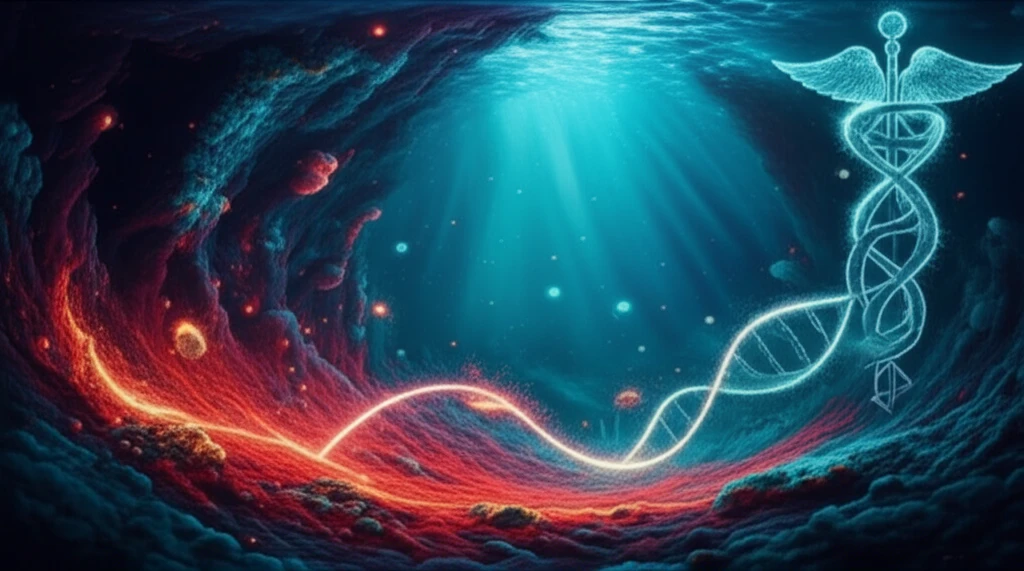
Red Sea's Hidden Promise: Can Microbes Unlock New Medicines?
"Dive into the surprising world of Red Sea microbes and their potential to revolutionize treatments for cancer and antibiotic-resistant infections."
Microbial infections pose a persistent and growing threat to public health, particularly with the rise of antibiotic-resistant bacteria. The search for new, effective medicines is crucial, and marine environments, teeming with diverse microorganisms, offer a promising, largely untapped resource. Marine-derived bacteria and fungi are known to produce unique natural products with significant biological activities.
For decades, pharmaceutical research focused primarily on terrestrial environments. However, the Red Sea, with its extreme conditions and unique biodiversity, presents an exciting opportunity to discover novel compounds with medicinal potential. Its isolation and distinct environmental factors have fostered the evolution of unique microbial life.
Recent advances in molecular techniques now allow scientists to efficiently collect, isolate, and identify diverse marine organisms from the Red Sea. These organisms are screened for metabolites with potent biological activities, including antibacterial, anticancer, and anti-inflammatory properties. This article explores the potential of Red Sea microbial diversity in the development of new therapeutic agents.
Red Sea Microbes: A Treasure Trove of Bioactive Compounds

The Red Sea's unique environmental characteristics, including high salinity, temperature, and pressure, have fostered the evolution of extremophiles – microorganisms thriving in conditions inhospitable to most life forms. These extremophiles possess unique metabolic pathways and produce novel compounds not found in terrestrial organisms. This makes them particularly attractive for drug discovery.
- Conventional Screening: Isolating and culturing marine microorganisms, followed by screening for antimicrobial and anticancer activity.
- Molecular Approaches: Using metagenomics, proteomics, and bio-chemo-informatics to identify genes and proteins associated with bioactive compound production.
- Advanced Analytics: Analyzing microbial extracts to identify novel compounds with potential therapeutic applications.
Future Directions: Tapping into the Red Sea's Untapped Potential
The exploration of Red Sea microbial diversity is still in its early stages, and its full potential remains largely untapped. Further research is needed to fully characterize the microbial communities, identify novel bioactive compounds, and develop effective drug candidates.
Modern molecular technologies, combined with traditional screening methods, are accelerating the pace of discovery. These advancements allow scientists to overcome previous limitations and access the vast genetic and metabolic potential of marine microorganisms.
By continuing to explore the Red Sea's microbial diversity, researchers hope to develop new and more effective treatments for a wide range of diseases, including antibiotic-resistant infections and cancer. This research holds the promise of improving public health and addressing global health challenges.
